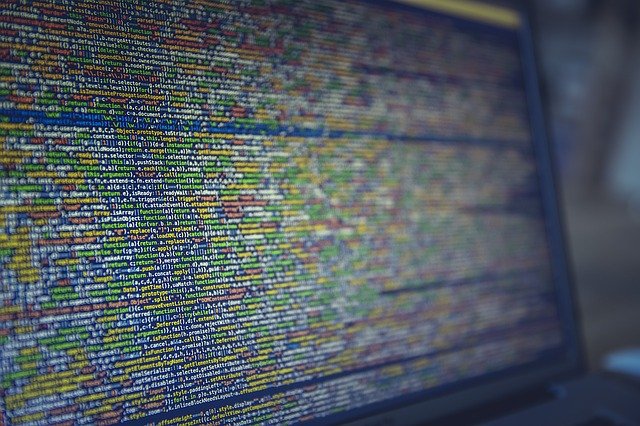Ransomware attacks are becoming more and more common these days, causing significant damage to both individuals and businesses. From personal data theft to financial losses, the consequences of a ransomware attack can be devastating. However, there is hope! With proper protection measures in place, you can safeguard your sensitive information and assets from cybercriminals looking for their next target. In this blog post, we’ll explore what ransomware is, how it works, its potential impacts on your life or business – but most importantly – ways that you can protect yourself against it. So let’s dive in!
What is ransomware?
Ransomware is a type of malware that infects a computer or network and encrypts important files, making them inaccessible to the owner. The cybercriminal responsible for the attack then demands payment in exchange for restoring access to these files.
There are two main types of ransomware: locker and crypto. Locker ransomware denies all access to your device until you pay up, while crypto ransomware encrypts your files so that you can’t use them until you pay the ransom.
These attacks often come in the form of phishing emails or malicious downloads from untrusted websites. Once installed on your device, they can spread quickly throughout an entire network.
The impact of a ransomware attack can be devastating – not only financially but also emotionally. Losing control over personal or business data can lead to feelings of helplessness and vulnerability.
However, with proper protection measures in place such as anti-virus software and regular backups, you can significantly reduce your risk of falling victim to this type of cyberattack.
How does ransomware work?
Ransomware is a type of malware that encrypts files on a victim’s system and demands payment to restore access. It typically spreads through phishing emails, malicious websites, or software vulnerabilities.
Once ransomware infects a computer, it can quickly spread throughout the network by exploiting weak passwords or unsecured connections. The malware then begins to search for important files such as documents, pictures or videos and encrypts them with a unique key that only the attacker possesses.
The attackers will then demand payment in exchange for the decryption key so victims can regain access to their encrypted data. Payment is often requested in Bitcoin because it provides anonymity and cannot be traced easily.
Sometimes ransomware will also threaten to publish sensitive information unless payment is made. This can cause significant damage to individuals or organizations who may have confidential business data exposed publicly.
Ransomware attacks are becoming more sophisticated and harder to detect every day. Being proactive about security measures such as regularly backing up your data and implementing strong passwords can help protect against potential threats.
What are the consequences of ransomware?
The consequences of ransomware can be devastating for both individuals and businesses. Ransomware is a type of malicious software that encrypts the files on your computer or network, making them inaccessible until you pay a ransom to the cybercriminal who infected your system.
For individuals, losing access to personal files such as photos, videos, and important documents can be emotionally distressing. In some cases, victims may have no choice but to pay the ransom in order to regain access to their own data.
Businesses are also at risk from ransomware attacks. Not only do they face potential financial losses from paying ransoms or restoring systems after an attack, but they can also suffer reputational damage if confidential client information is compromised.
In addition to these immediate consequences, ransomware attacks can also have long-term effects on cybersecurity practices. Once a system has been breached by malware it becomes more vulnerable and less secure than before. This increases the risk of future attacks and makes it harder for organizations to protect themselves against other types of threats.
Protecting yourself against ransomware should be a top priority in today’s digital landscape.
How can I protect myself from ransomware?
Ransomware attacks can be devastating, but there are steps you can take to protect yourself from them. One of the most important things you can do is to keep your software up-to-date. Software updates often include security patches that help fend off ransomware attacks.
Another way to protect yourself from ransomware is by using strong and unique passwords for all your accounts. Avoid using the same password across multiple accounts and use a combination of uppercase and lowercase letters, numbers, and symbols when creating new passwords.
It’s also crucial to back up your data regularly on an external hard drive or cloud storage service. This way, if you fall victim to a ransomware attack, you won’t lose all your valuable data.
Be wary of suspicious emails or links; avoid clicking on any links or downloading attachments unless they come from trusted sources. And always make sure that you have installed reputable antivirus software on your devices as it helps in detecting malware before it infects our system.
By taking these simple precautions regularly we can significantly reduce our chances of falling prey to ransomware attacks thereby keeping our personal information safe and secure
Conclusion
Ransomware attacks are becoming more and more common in today’s digital world. These malicious attacks can cause serious consequences such as data loss, financial losses or even reputation damage. Protecting yourself from this type of attack is crucial and should be taken seriously.
By following the steps outlined in this article for protecting against ransomware, you can significantly reduce your risk of being targeted by cybercriminals. Always keep all software updated, use strong passwords and firewalls, avoid clicking on suspicious links or downloading attachments from unknown sources.
It’s also essential to have effective antivirus software installed that will detect any potential threats before they become harmful to your system. And most importantly, always make sure you regularly backup your important files so that if an attack does happen – you won’t lose everything.
With these measures in place, you can enjoy peace of mind knowing that your valuable information is safe from harm!











FIND US ON SOCIALS